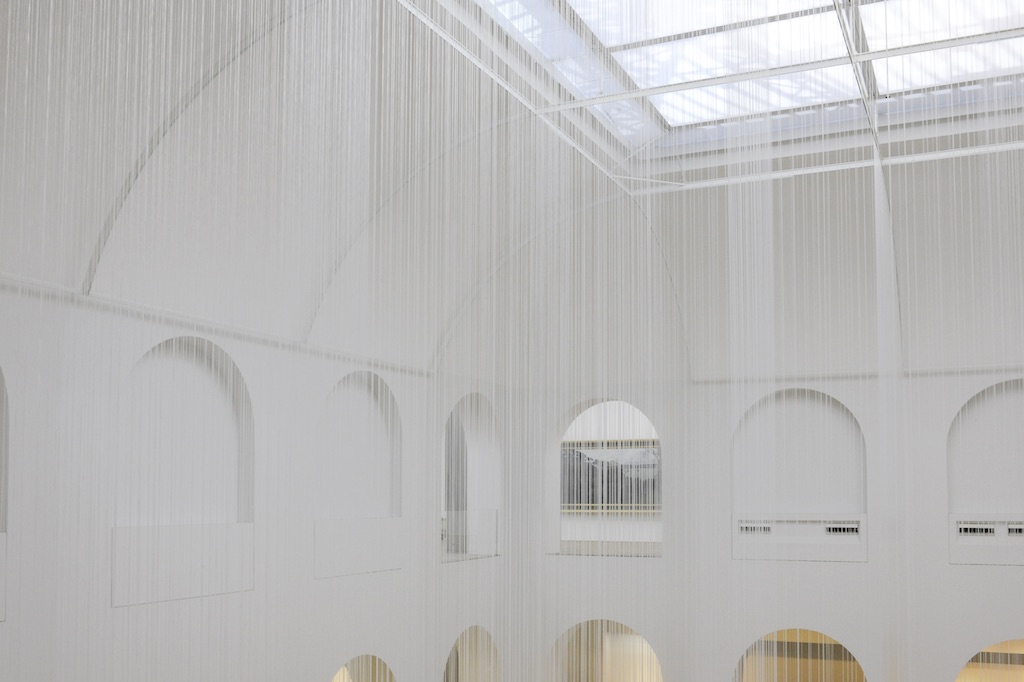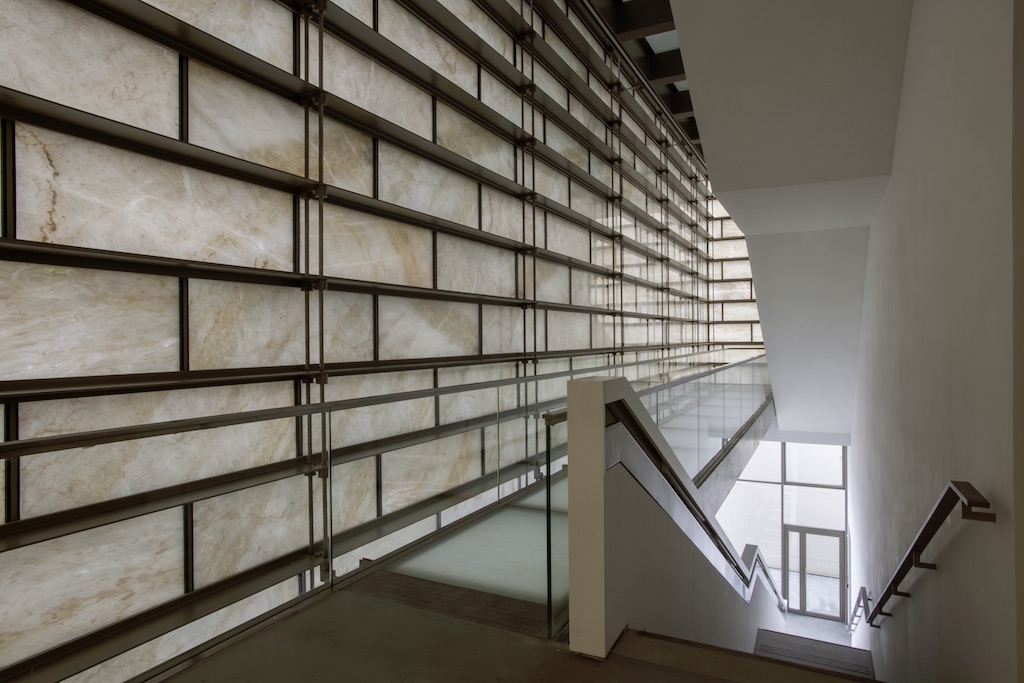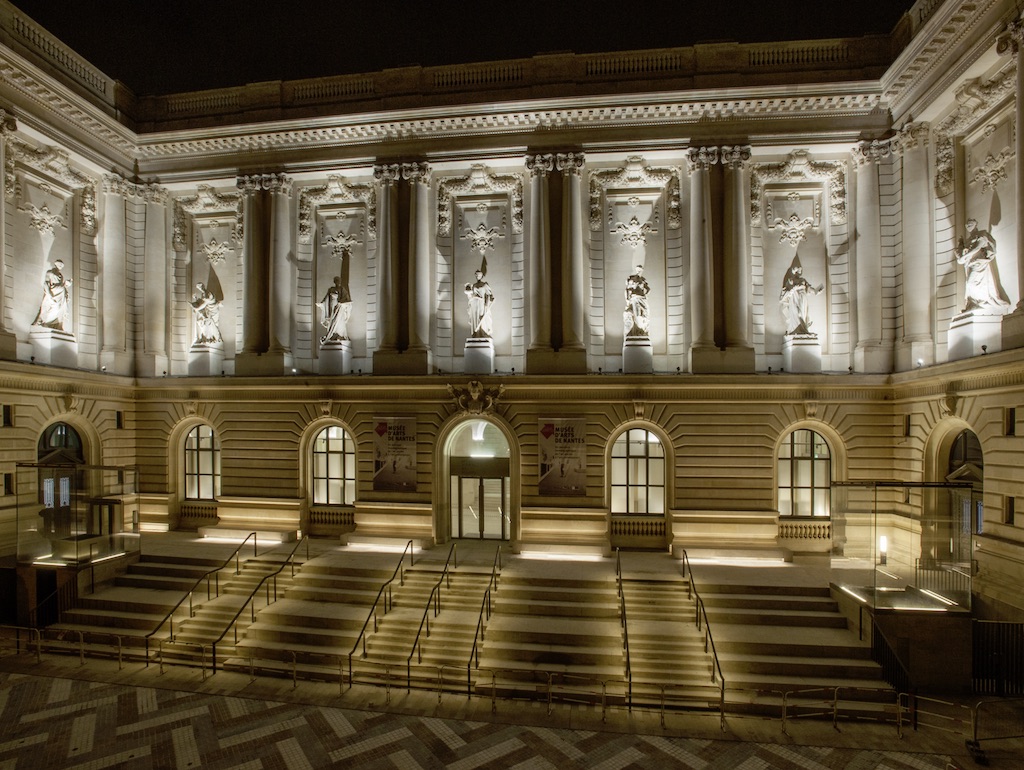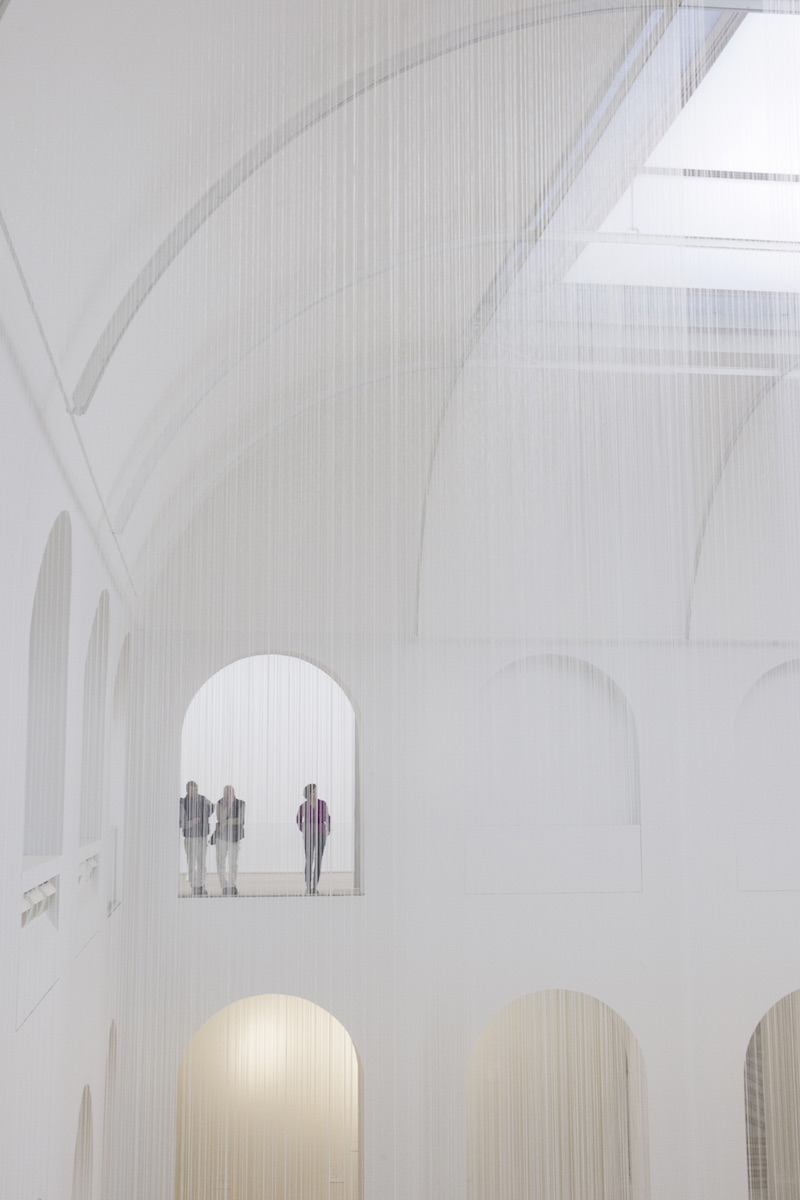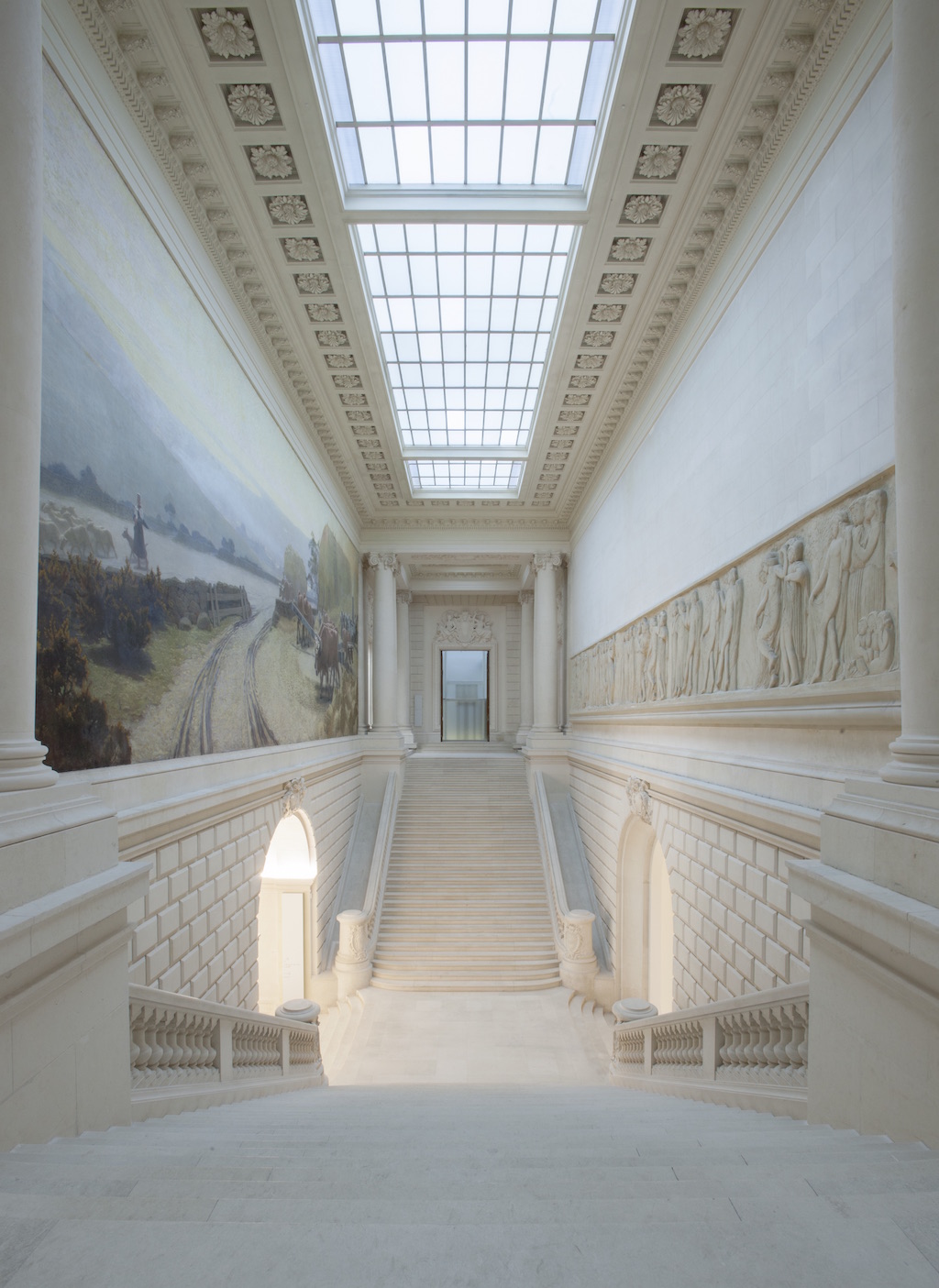Sophie Lévy
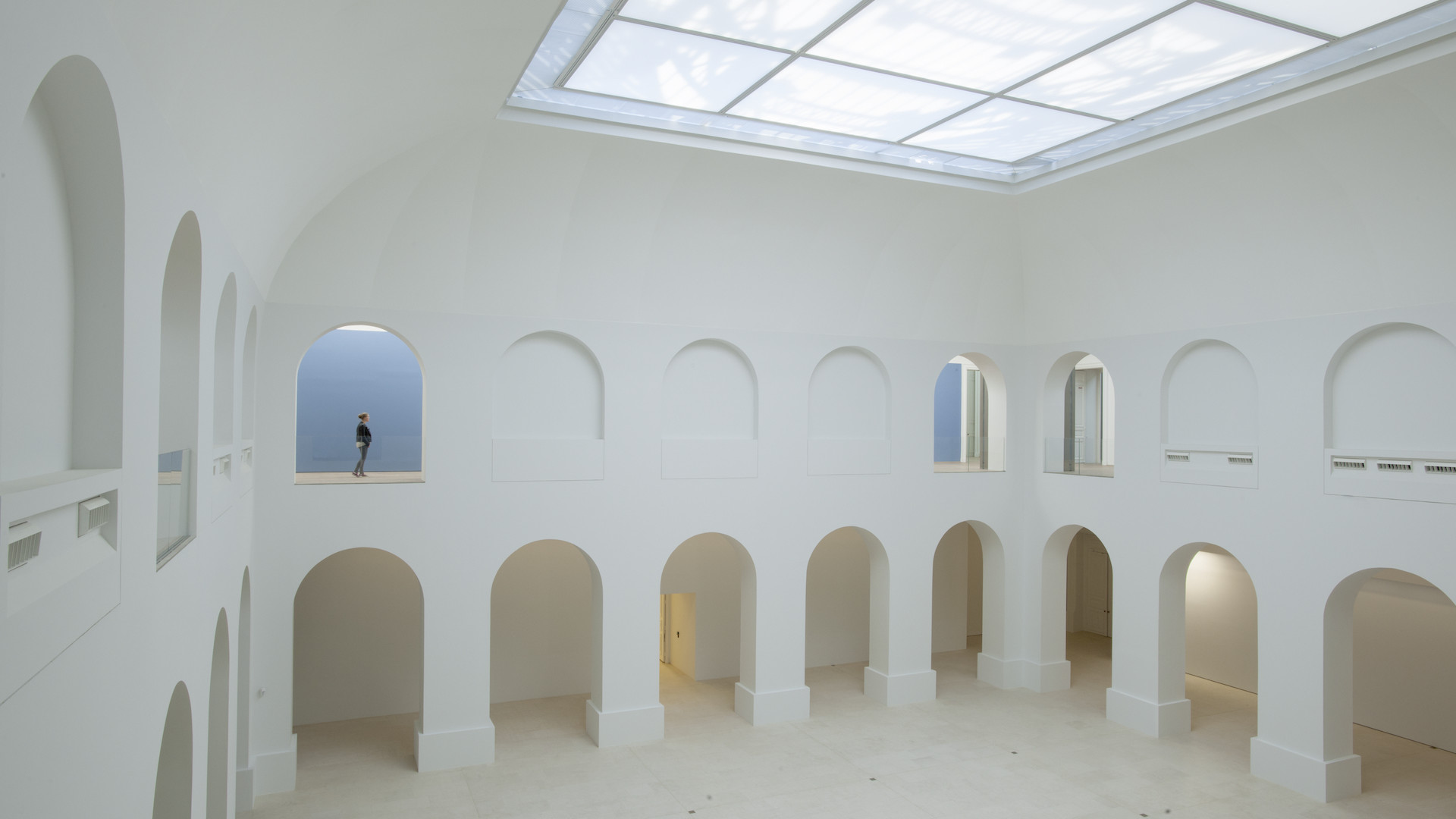
On 23 June, the Nantes Museum of Fine Arts will re-open its doors to the public after works lasting more than two years which have considerably reorganized the arrangement of exhibition areas following the addition on its north side of a new wing devoted to the presentation of the permanent collections, called “the cube”. The Musée d’arts de Nantes, which is its new name, is inaugurating its programme with the German artist Susanna Fritscher who, in a completely revamped patio, will set up a monumental installation consisting of a host of filaments forming a translucent veil with nothing if not arresting visual effects. Newly arrived from the LaM, the Museum of Modern Art in Lille, where she was director until 2016 after running the Terra Foundation for American Art, the new director of the new Nantes museum, Sophie Lévy, gives us her first impressions of working within a deeply transformed vessel, as well as reflections about the importance of the re-opening of an institution that is pivotal for the city’s artistic life, and the architectural, cultural, and urban challenges which it will certainly raise.
Re-opening a museum, even if in this case it is more a matter of an extension, gives rise to “new owner” reflexes: what are your first impressions about how the flow between the areas has been arranged? Do you think that the works will be well accommodated in them and shown in their best light? And will the visit be a pleasant one for museum goers?
The reflex of a new owner… An interesting idea which somewhat radically contradicts the idea I have about a museum director. I feel rather like a hostess, not altogether legitimate, to whom a palace has been entrusted, who awaits her guests with a mixture of happiness and anxiety. The principle behind any fine arts museum is that of a particularly lengthy continuum, which began well before you, and will carry on well after you. Henry-Claude Cousseau was interested in the position of the old Garage Louis xvi in the early 1990s. So it has taken more than a generation, six directors and three successive mayors for a beautiful idea to hatch and be offered to the public. My first impressions, when the museum was finished but empty, were that the overwhelming façade inserted in the restricted space of the city was followed, in the albeit very little altered entrance hall, by a surprising sensation of a private and peaceful palace, and one that was extremely well lit. An impression that the dignity of the monumental staircase and the large galleries upstairs had been humanized by the minimal sensuality of the materials used by the Stanton Williams firm. And oddly enough, by the acoustics! Although the echo respects the scale of the premises, it ends up making the sound of footsteps like a muffled rustling which enables the visitor to remain within himself.
Once in the cube (a natural name for the extension), despite the large windows which enable the visitor to situate the space in the city, you feel like you’re somewhere else or everywhere, so strictly has the spirit of the white cube been complied with: white walls and ceilings, completely modulable sets, waxed concrete floors.
The greatest unknown factor is still the way in which visitors will appropriate these complex and conjugated spaces: the palace, the cube, the chapel of the Oratory, the basement itself, and its additional exhibition room, all this represents a major wealth of areas and works (almost 900) which one can sometimes pass through with an absentminded gaze, but which, at other moments, will make it possible to plunge into a contemplation which might last for a few hours.
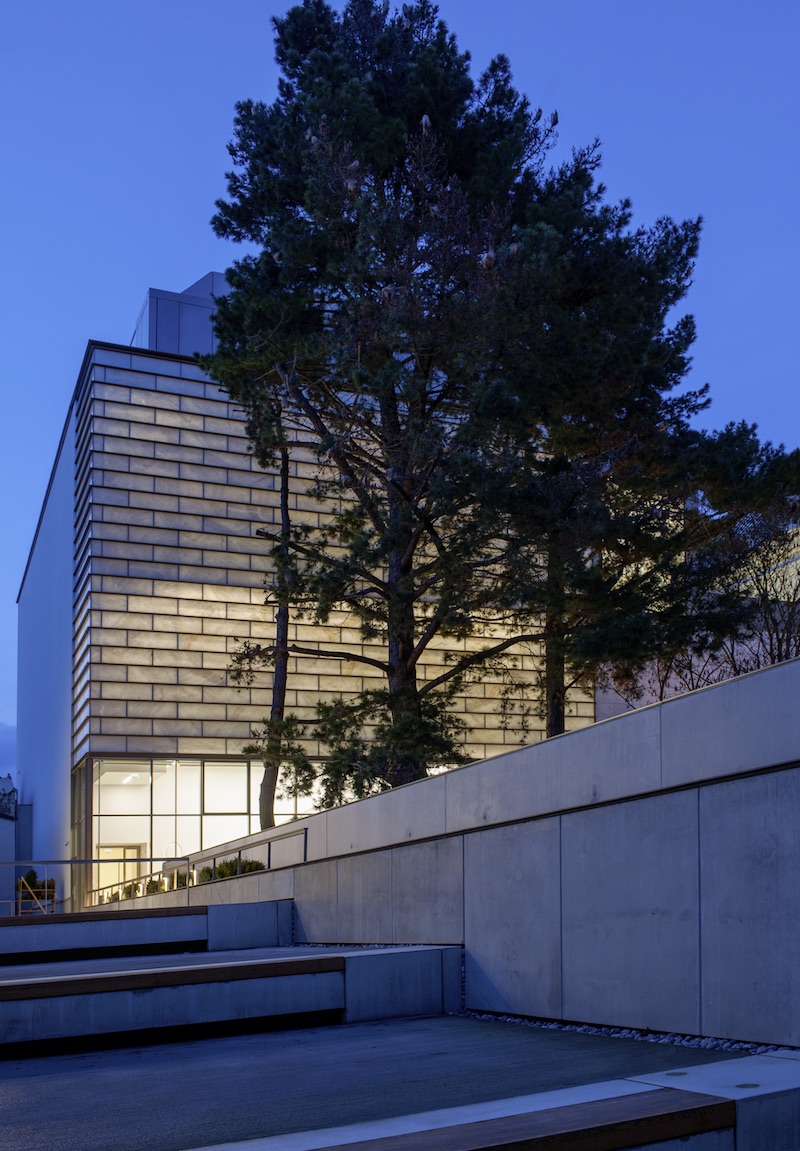 How has the museum’s new architecture been conceived, and what are the presuppositions underpinning the new construction—the cube—which has been added to the palace and its famous patio? How have the architects introduced themselves into this rich architectural history, and how have they extended it? Have they created a radical break with the past? How has the dialogue with the nearby urban planning been established?
How has the museum’s new architecture been conceived, and what are the presuppositions underpinning the new construction—the cube—which has been added to the palace and its famous patio? How have the architects introduced themselves into this rich architectural history, and how have they extended it? Have they created a radical break with the past? How has the dialogue with the nearby urban planning been established?
The architects Paul Williams, Patrick Richard, and Anne Ferhenbach of the Stanton Williams firm have shown a great urban and architectural “psychology”, if we may so put it. Lending an ear to the history of the place and the collections, to the needs of the teams and the inhabitants, and also lending an ear to the essential factors of the identity of Nantes, they have inserted their creations into the hollows of an enclosed urban space, to form a U-shaped programme, which is striking both for its complexity and its coherence. If we leave aside the stairway of the cube, lit and protected by a spectacular curtain-wall, a sort of honey-coloured translucent marble window, which however remains barely visible to passers-by in the street, the project felicitously assumes its discretion. Let us emphasize that all the issues, which were nevertheless very diverse, were put in the hands of Stanton Williams: from the design of the forecourt to the arrangement of the street, the restoration of the glass roofs, the museography and the furniture design, to the signs designed in close liaison with the new graphic chart of the museum. Accordingly, an attentive eye will note that from one end of the project to the other, a certain vocabulary of hues, materials, and light effects has been strictly observed, a vocabulary which acts unwittingly as a guiding thread for the visitor: bronze-coloured metals, different kinds of concrete for all the new floors, rough oak for all the furnishings, shadow gap hanging walls, and a whole range of whites which act as a screen for the infinite variation of the natural light, whether it comes from above or the side.
The Nantes Museum of Fine Arts has had a succession of acclaimed directors in its recent period, from Henry-Claude Cousseau to Blandine Chavanne, by way of Corinne Diserens: the specific feature of the Nantes Museum is that it is a museum of modern and contemporary art, and, with the exception of Corinne Diserens, who decided to favour the contemporary, your predecessors have always advocated a certain form of alternation between the exhibitions devoted to modern or ancient art, and those dedicated to today’s art: what will your position be on this?
The Nantes Museum has another specific feature in addition to the one you mention: it is quite rare that on the scale of a major metropolis, there is only one large museum for the visual arts. Be it in Lille, Lyon, Marseille, Toulouse, or Bordeaux, several institutions incarnate several distinct identities within one and the same territory. All we need do is mention the Grenoble museum, a kind of grand cousin of the East. I think that this particular feature explains this need for alternation: the brief of the Nantes Museum is to be plural, in order to satisfy a very diverse population. And this is paradoxically a risk, because it cannot lay claim to universality (because many other museums in France, Europe and the world are within range of being visited), but nor can it choose for itself an identity that is too specific, and too exclusive. I who have happily directed a museum for seven years with a lateral if not marginal identity, I am struck every day by this paradox.
In 1848, however, the City decided to devote the essence of its acquisitions to living art, and Henry-Claude Clousseau, splendidly assisted by Jonas Storsve, reinvested this principle with all its verve. And so, you are right, it is more than ever a museum that is above all contemporary which will re-open on 23 June. So several areas will be repeatedly earmarked for contemporary art every year: the patio, the glassed-in space in the forecourt, with its situation half-way between the museum’s exterior and interior, and the chapel of the Oratory, whose Baroque power works especially well when it is used for videos and installations. Not forgetting, obviously enough, the 2000 sq. m. of the cube, which, even if dedicated to the permanent collection seem to be an ideal venue for exhibitions and hangings about certain contemporary themes, associating collections and loans.
How has the job of museum director evolved during the last 30 years: has the part reserved for communication and fund-raising taken precedence over the strictly programmatic aspect? Does the part devoted to insuring the works in particular and to negotiations to do with obtaining certain rare pieces have an influence on the way exhibitions look?
I’ve now been working for almost 25 years in museums, but I don’t have the feeling that the director’s job has evolved as much as all that, at least in museums in regional capitals. The proximity with political overseers, the need for the museum’s strategy to be related to a conception of the territory, the issue of communication and patronage, and the time that is perforce required to manage a team were already major concerns for the director of the Dijon Museum, where I started out. Personally, I can see three far-reaching developments in museums, and I still don’t know how they will pan out: when I started, attacks against contemporary art and artists were daily, and for the main public, only ancient art was acceptable and understandable. The perception of things has now considerably reversed; huge international fortunes, whether of industrial groups or individuals, have grown in number, and have taken hold of the art market like a playground. At the same time, the public world became poorer. The issue of disinterestedness, which lies at the heart of the meaning of the museum, and which explains why the institution is one of the rare ones not to arouse distrust, is being harmed by this power play which has been profoundly capsized. Lastly, we have not seen the end of the consequences of the digital revolution on the dissemination of images, on the capacity it offers to poor institutions to dialogue closely with the people who form its public, and lastly and above all, on the way in which human beings will still want to appropriate this collective space, with its unique experience, where you cannot touch or possess anything. Things are there for you, but they remain at a distance.
Museums all over the world are looking for an adaptation to these three far-reaching developments, and tomorrow’s directors will be those who can find a way of responding to them, by letting the museum keep its specific character: neither a shopping mall, nor a theme park, nor a church, nor a school, but a place of collective and generous aesthetic experience.
Why have you chosen Susanna Fritscher to open the “new museum’s” programme: should we interpret this as a sign that contemporary art is only relevant in its international dimension, or else is it above all due to purely aesthetic choices, in particular the artist’s capacity to reveal volumes through her aerial installations which are in deep dialogue with the premises?
Even if Susanna Fritscher was born in Vienna, she has been living in France for more than 25 years, so I’m not sure that she fully incarnates an international relevance. On the other hand, a lot of thought went into the choice not to organize a great re-opening exhibition, because priority had to be given to the way visitors would rediscover the greatly transformed place and collections. And in fact, the installation devised by Susanna Fritscher for the patio has great qualities: minimal and transparent, De l’air, de la lumière et du temps does not hide the architecture, but reveals it in its three-fold dimension of space, light, and experience in the phenomenological sense of the word. Set in the very heart of the museum, in that theatrical place which is still the nerve centre, it acts almost like a statement about what a museum of arts may be these days.
What will be the place of the museum in a city with grand cultural ambitions, like the city of Nantes: should it become the flagship of the metropolis’s culture, at the risk of giving rise to an extreme concentration of projects, or else should it be included within a support and partnership policy with local people? I am thinking in particular of the Nantes associations which have always played a vital role in the emergence of local artists and the balance of the artistic ecosystem, and which are suffering terribly at this particular moment: will the museum set up links with these latter, and will there be invitations to launches?
I am far from having completely discovered this ecosystem you are talking about, because it is multiple and proliferating. At this stage, I only know very few things: extreme concentration is not favourable to anybody. A large city is more than the number of inhabitants, an ability to create a harmonious co-existence of worlds, aesthetics, environments, and populations, all extremely distinct. And a wide array of supply in the cultural sphere is not a form of competition: in this domain, “more is more”. In order to play its note in this concert, the museum must try to be clear about its identity and its goals, because by wanting to be the museum for one and all, it might become one of those places whose identity we have no idea about, a kind of multipurpose place or Spanish inn. Many collaborative projects are already scheduled but, it is true, involving firstly and above all live spectacle and the university. The place is huge, both in terms of square meters, works, and times in the year, in the week: the vitality of the region will have plenty of room to express itself.
Could you tell us a little about the exhibitions in the offing, although I imagine you must still be in a period of preparation and more inclined to becoming familiarized with the museum’s new circuits?
After Susanna Fritscher, the first temporary show to be installed in the patio will be devoted to a Caravaggio-like painter who has never had a retrospective despite his sensual virtuosity, Nicolas Régnier. We also know that Laurent Tixador will produce the spring 2018 project in the windows of the forecourt, but we still don’t know which artist we shall give the patio to during that period. In autumn 2018, an exhibition about the 1886 Salon de Nantes will show how Impressionism flirted with Nantes, but did not settle there. Several projects will also shed light on the new link which unites the museum with the collection of the Fonds de dotation Jean-Jacques Lebel: an amazing and unusual collection which will help us to define the links between art and poetry, and plan a hanging on one level of the cube dedicated to the history of the happening, and in the autumn of 2020 enable us to show this collection in its different component parts: from Mallarmé to Erró, and from Picabia and Duchamp to Nam June Paik.
Everything still has to be constructed and invented: this is a joyous and impatient moment.
(Image on top and all other images : Musée d’arts de Nantes. Photo : C. Clos. © Nantes Métropole, Musée d’arts de Nantes, C. Clos / Architecture Stanton Williams)
- From the issue: 82
- Share: ,
- By the same author: Claire Le Restif, Bouchra Khalili, Sophie Legrandjacques, Christine Macel, Wilfried Huet / GAGARIN,
Related articles
Céline Poulin
by Andréanne Béguin
Émilie Brout & Maxime Marion
by Ingrid Luquet-Gad
Interview with Warren Neidich
by Yves Citton
